“Not good because it’s old, but old because it’s good” How the New Balance grey became a staple in Japan.
.sabukaru.online for Goodhood. Words by Vanessa Fajemisin.
New Balance has, without a doubt, solidified itself as a dominating force within the sneaker industry. From timeless classics to culture-defining collaborations, the brand has managed to act on its clear plans to shake up the global sneaker hierarchy. And what’s more, is they’ve managed to do so while maintaining a time-old focus on function, quality and authenticity. While the brand has been seeing a huge resurgence in recent years, New Balance has a rich history in the sports and footwear game. Founded in 1906, there aren’t many brands that can say they’ve been around for over 100 years. And though it wouldn't be for, again, 100-something years (and long-after the days it was more common to see a blue or white pair of New Balance than it was to see a grey pair), New Balance would come to be recognized as the only brand to bridge the aesthetic gap between a Bernie Sanders and an Emily Ratajkowski.
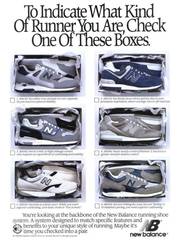

The secret to this formula can be found within the brand's origins, unique design approach and signature 50-plus shades of grey and complementary neutral tones. Or perhaps more specifically, within the coalescence between the right designers/creatives and a brand of real heritage, with a true depth in its archives. New Balance is, to quote New Balance VP of global lifestyle, Yuron White, a brand that’s “not good because it’s old, but old because it’s good.” East-coast to its core (equally popular amongst ‘90s collegiate athletes and DMV trappers alike), there are few brands as all-American. Despite this, or more likely because of this, the brand has garnered a cult-following on a totally different east coast: Japan. This Grey Day, we take a look back at the history of New Balance and their emblematic grey, tracing how they have ingrained themselves in the collective style consciousness of not only in the West, but beyond.

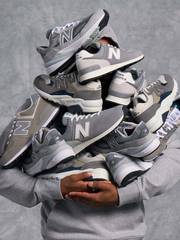
Originally founded by an English settler who immigrated to Boston, it wouldn’t be for another 70 years, amidst a new wave of ‘80s consumerism and fitness mania, that New Balance would really hit the ground running. Enter: the grey, pigskin suede New Balance 990. Released in 1982 with an unprecedented $100 price tag, the 990 was the most expensive sneaker of its time. Receiving 50,000 orders after only six months, word on the street was that the sneaker was worth every penny. Two years later, New Balance released the 1300, a running shoe so expensive it was advertised alongside the cheeky slogan “Mortgage the house”. Priced at then-whopping $130USD (just over $300USD today), and offered in a cool grey/icy blue colour palette, the 1300 set a new standard, not only for performance, but for craftsmanship and materials. And while it's difficult to pinpoint exactly when New Balance began embracing its iconic greyscale, by the start of the ‘80s, ads boasted that the brand was “not in the habit of wilfully changing their shoe models each year to match the fashion colours of the Paris collection.”
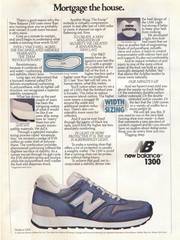
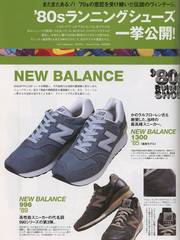
The 1300 was a hit not only in the US but across the globe, particularly in Japan, where both New Balance and Japanese Americana were on the rise. Japanese Americana (also see: Ametora) refers to the aesthetic inspired by classic, traditional or vintage American workwear, denim, and textiles, filtered through the Japanese lens. It’s existence being a peculiar byproduct of the cultural osmosis between the US and Japan, due to World War II.
Because of this, Japan has been greatly influenced by casual American styles, aesthetics and cultures, resulting in a penchant for re-imagining American classics for Japanese sensibilities. In Japan, where people tend to respect and place great importance on the heritage, history and culture, it’s no surprise that Japanese consumers would be attracted to New Balance. And as early adopters of the brand, Japanese collectors instantly recognized the 1300 as a shoe of unmatched quality.
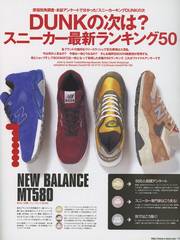
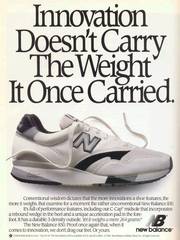
Given its immense popularity in Japan, the 1300 was re-released in 1995 as the New Balance 1300JP. Under the supervision of New Balance Japan, the 1300JP was designed to meet the exact specifications of the original model, combining their archives to recreate even the smallest of details. Another two years later, the 580 also made waves, namely in Tokyo’s Harajuku district. Created as the Japanese exclusive iteration of the ‘Made in USA’ 585’s, the model was nowhere near as universally hyped as previous models like the 1300. However, the 580’s bold, chunky design was well received by the style-obsessed youth subcultures of the creative and experimental Ura-Harajuku scene. Other models popular in Japan include the 1400, 996, 576 and 574. Japan actually played a key role in introducing the 1400, the 1994 version once exclusively available in Japan.

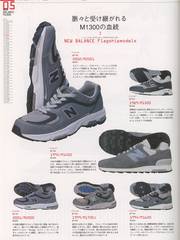
As the end of the millennium continued to draw near, technological advancements meant that love for the cement-coloured* sneakers would only become more easily discussed and documented. Globalization, better cameras and more powerful devices meant sharing images and information was easier than ever. And before long, the whole world knew that the New Balance 992 was the preferred shoe choice of the late-Steve Jobs. As the digital age continued into the new millennium, social media allowed for an even closer look at major cultural forces like Rihanna or Kanye West, and at the pieces they love.


In the increasingly trend-focused, exploitative, fast-fashion landscape many of us find ourselves in, New Balance feels like one of the few legacy brands still dedicated to craftsmanship and quality. Through their ubiquitous status within the industry, they’ve continued to serve their earliest fans, in addition to new ones. Shoes once synonymous with dads, doctors and silicon tech dweebs, are today just as frequently spotted on the most popular actors, musicians and models of our generation. Both new styles, like the Grey Day 550, 9060 and 580, in addition to archival ones, have been “absorbed” by current trends, rather than being designed to fit into them. Through this, the brand has managed to differentiate itself from the omnipresent force of its competitors, securing a meaningful spot in the minds of sneaker lovers from the DMV to Tokyo. For New Balance valuing the timeless, over the trendy, has made them an understated, yet recognizable fashion favourite in archetypal grey. Or perhaps, more aptly put by Joshua Hunt for GQ, “the sensible sneaker brand for these decidedly nonsensical times”.





















































